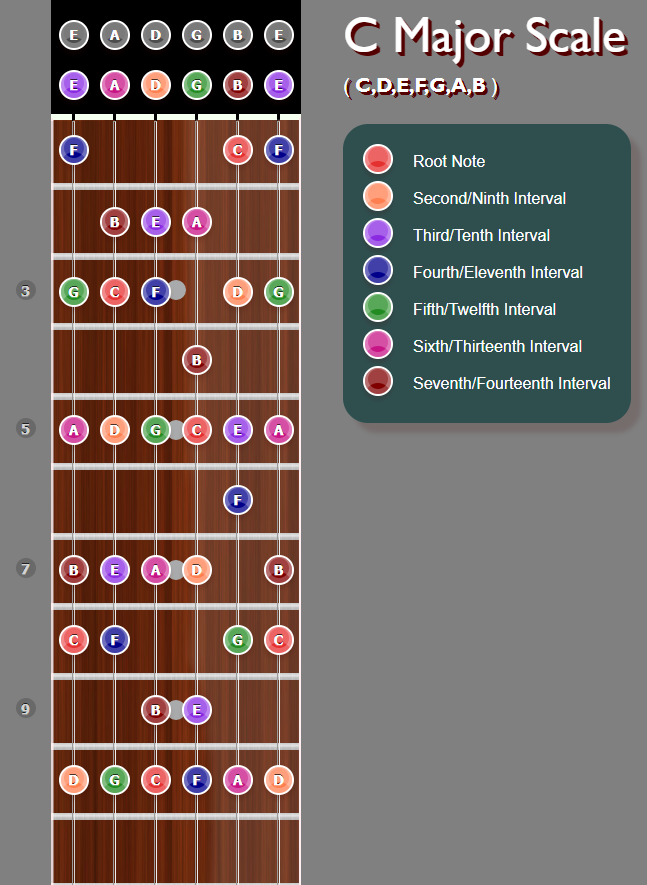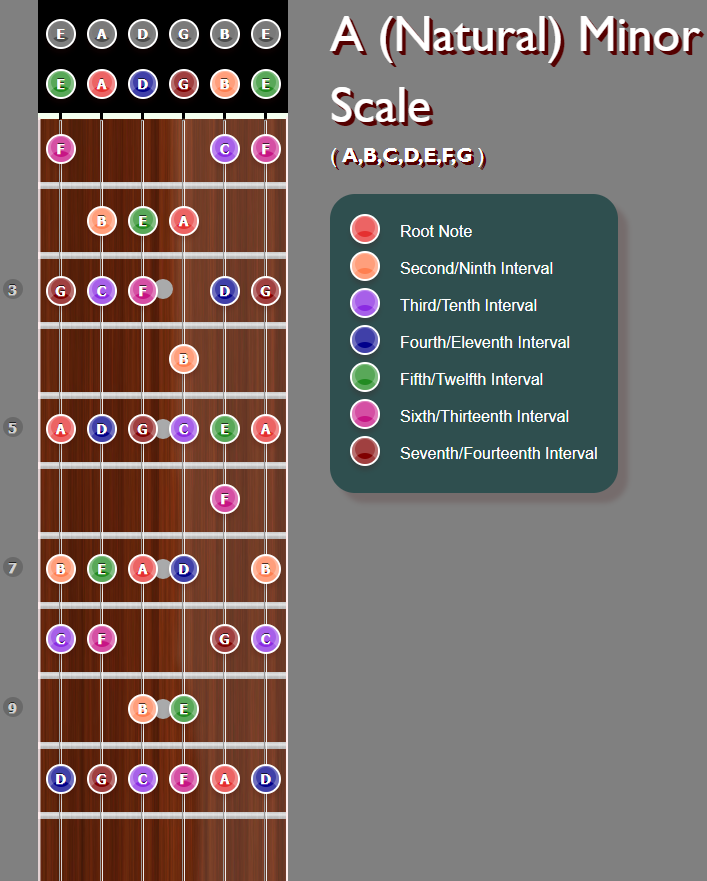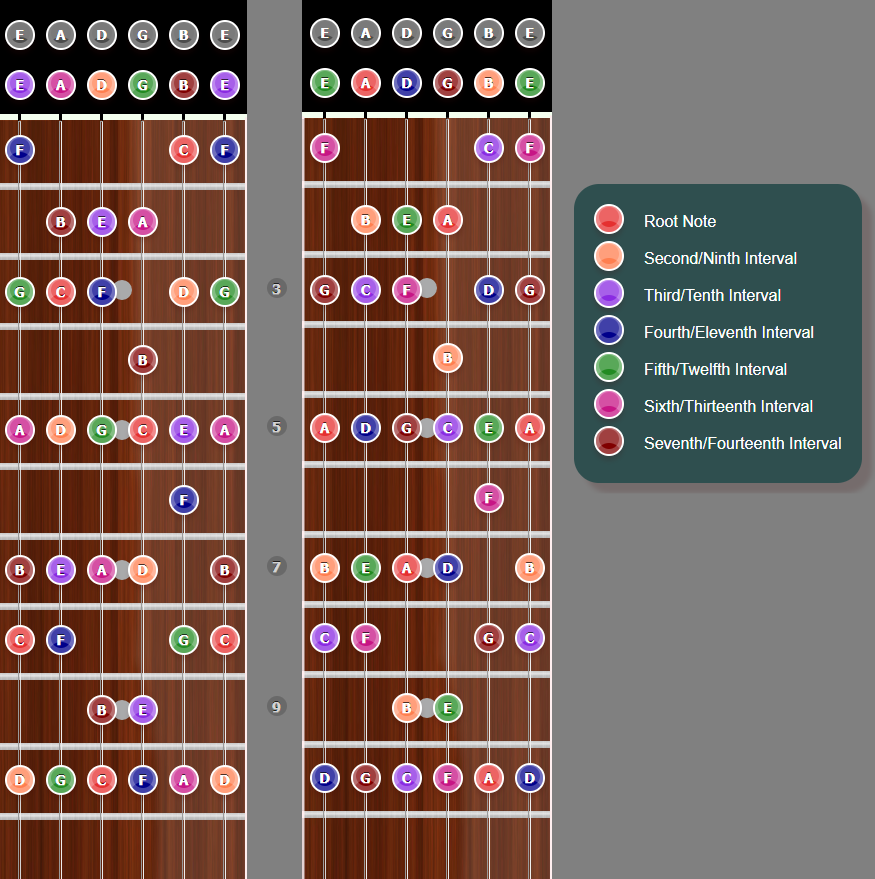Relative Minor
To every Major scale, there is a Relative Minor.
A Relative Minor Scale contains the exact same notes as the Major Scale, but is Minor.
You're probably asking "If they contain the same notes, why is it minor?", like I originally did.
They both contain the same notes, but the root note is different. So, the starting position is different.
How Do We Find The Relative Minor?
It's actually very simple, from the root of the Major Scale, just move a minor 3rd interval (3 frets) down.
We'll test this in the C Major Scale, since it doesn't contain any sharps or flats.
The notes of the C Major Scale are: C - D - E - F - G - A - B
Here is the C Major Scale on the fretboard.

Now to get the Relative Minor, we start at the C Major Scale's Root Note, which is, of course, C.
We then move down a Minor 3rd (3 frets), which brings us to.....
Am Scale ( C Major's Relative Minor )
3 frets down from C, is A (B => Bb => A). Since it's a Minor Scale, it's the A Minor Scale.
The notes of the A Minor Scale are: A - B - C - D - E - F - G
Here is the A Minor Scale on the fretboard.

Side By Side
Here is the C Major Scale with the A Minor Scale next to it, to make it easier to compare.
The C Major is on the left, A Minor on the right.

The only difference is the colors, which stand for the intervals of the scale.
The C Major's Root is C, and the A Minor's Root is A.
Check the legend to see the colors of all the intervals.
Wrap Up
The Relative Minor is an easy concept to grasp.
It's important to know when we talk about playing leads over a scale.
It even more important when we begin the Pentatonic Scale Patterns.